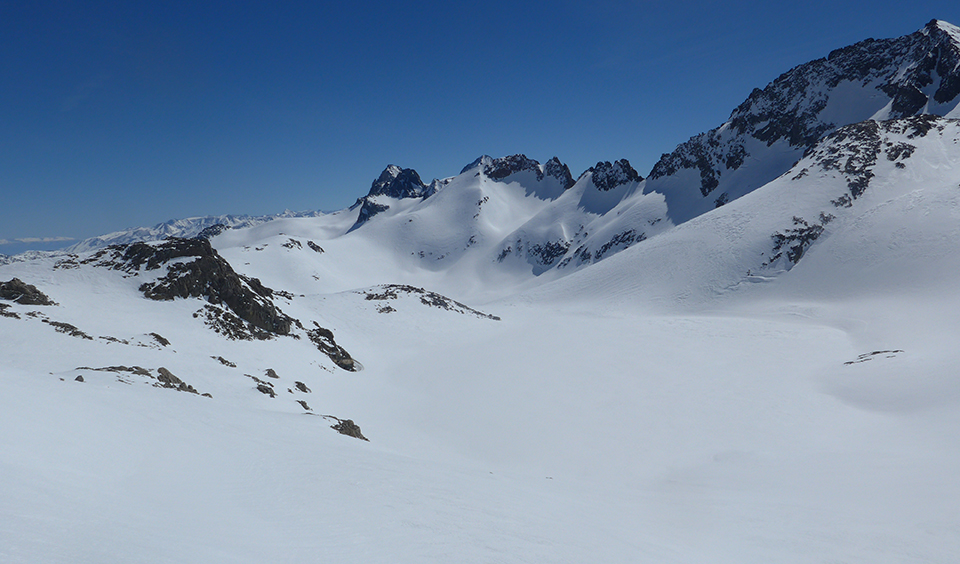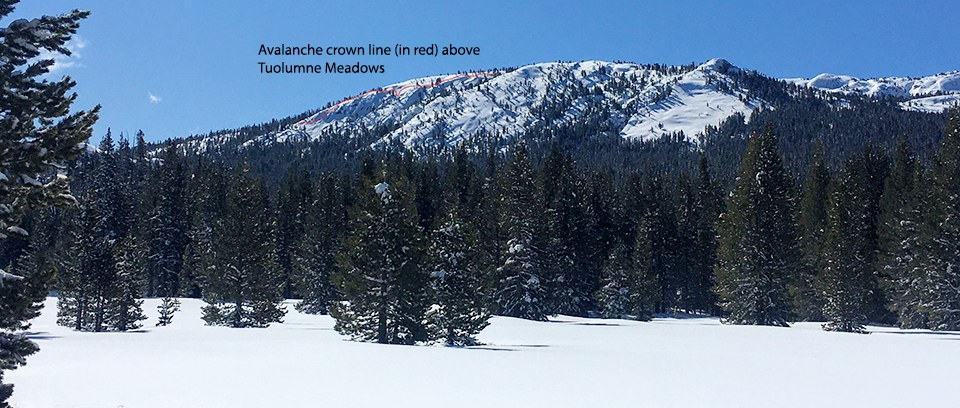New snow: 24 inches
Total settled snow depth: 38 inches (at 8,600 feet)
High temperature: 42°F (April 3)
Low temperature: 1°F (April 7)
March Weather Summary
New Snow: 58 inches (Tuolumne Meadows average 55.1 inches)
Snow Water Equivalent: 2.82” (Tuolumne Meadows average 3.84 inches)
Average Temperature: 24.6°F (Tuolumne Meadows average 28.7°F)

Ski Conditions and Weather
Yosemite Park remains closed due to COVID-19. Our hearts go out to all those affected by this pandemic. Although it is difficult to carry on, even here in the wilderness, as if the world “outside” is unchanged, we know the truth is different than that. Take comfort friends in knowing that wild nature remains unchanged here in this part of Yosemite. The opportunity to be standing by peaceful waters will again return for us all.
The park completed the April 1 snow surveys this week. The Tuolumne River drainage is 46% of the April 1 average for snow water equivalent (SWE), and the Merced River drainage is 49% of average. To put this in some historical perspective, in the history of snow surveying in the Tuolumne River drainage the wettest year on record was 1983 when the SWE was 224% of average. The driest year on record was 2015 when the Tuolumne River drainage was 7% of average. Over the past 10 years there have also been some very wet years. 2011, 2017, and 2019 all came in about 176% of average for April 1 SWE in the Tuolumne River drainage. Soon, the great Sierra Nevada water bank will be for withdrawal only when all the snow has turned to water. “Humidity built the snowman, and sunshine brought him down.”
This first week of April brought the biggest storm to Tuolumne Meadows since early December. We measured 24 inches of new snow and nearly 2 inches of water at our weather plot. It is still snowing today and it is good to see this extension to the winter. Every flake counts friends.
Avalanche and Snowpack Conditions
The avalanche center has suspended their forecasting for this season due to COVID-19, but they do have a very poignant video on their homepage that we recommend along with some valuable snowpack evaluation tools for springtime. As always, we are very grateful to Eastern Sierra Avalanche Center (ESAC) for their invaluable service to the outdoor community.
The new snow load this week was the first real test of the local snowpack and, not surprisingly, when the clouds cleared over the past few days we observed significant avalanche activity on north and east aspects between nine and ten thousand feet. This was the result of the shallow snow pack, cold winter temperatures, and intermittent crusts that formed throughout the winter. When loaded with a slab of new snow, this weak underlying snow structure failed resulting in widespread avalanching, some of which stepped down into older layers close to ground level.
Due to increasing temperatures this weekend, rockfall and wet slides may be possible.

Wildlife
During this stormy period, not many animals were out and about. Travel for both two and four legged creatures was difficult at times in deep, collapsible, sometimes sticky snow, followed by various, punchy melt-freeze, almost rain-like crusts. Although easier for our winged friends to travel, they too were hunkered down. A pair of common ravens has been scanning the meadows lately. The Clark’s nutcrackers, northern flicker, Cassin’s finch, red crossbills, dark-eyed juncos, and mountain chickadees are all still active among the sheltered pine boughs.
General Information
The Tuolumne Meadows Ski Hut is closed.
Remember we all can enjoy the great outdoors safely without putting one another at risk. Although Yosemite is closed and we can’t recommend any outdoor pursuits here, we can recommend some music and reading for the soul: “Tree of Forgiveness” by John Prine and The Overstory by Richard Powers.
Virtual hugs to all.

